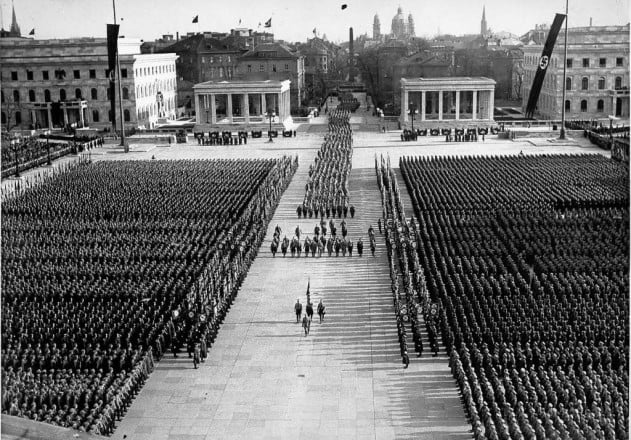
Munich’s newest museum, the Documentation Centre for the History of National Socialism, attempts to address a dark chapter in Germany’s history– the Nazi period.
The Nazi museum as it is popularly known opened April 30, which was the 70th anniversary of Adolf Hitler’s suicide and Munich’s fall to American forces at the close of World War II. (See Hitler’s First House Could Become a Museum and Would You Buy One of Hitler’s Terrible Flower Paintings for $30,000?.) Both Holocaust survivors and American veterans of the war were on hand for dedication ceremonies.
“Munich had a harder time with this than all the other cities in Germany because it is also more tainted than any other city,” said museum director Winfried Nerdinger of the birthplace of the Nazi party to the AFP. “This is where it all began.”
The museum is housed in a new building constructed amid neo-classical buildings that were once the headquarters of the Nazi party. Hitler opened the National Socialist German Workers’ Party office in Munich in 1930.
The four floors of exhibition space contains video footage of Nazis marching in formation, and of the aftermath of the Allied bombing, as well as photographs. Nerdinger has opted not to display the distinctive Nazi uniform and swastika flags, purposely shying away from the Nazi “aesthetic.” Given how controversial other Holocaust-related exhibitions can become (see Jewish Group Accuses Estonian Museum of Mocking the Holocaust), this seems wise.
The goal, as per the museum’s website, is to “address the city’s National Socialist past and the ramifications of Nazi dictatorship,” providing a means of “dealing with Germany’s desertion of civilized norms” and reminding visitors that “democracy and tolerance cannot be taken for granted, but have to be constantly secured and shaped anew.”
This point was underscored by the presence of 30 neo-Nazi demonstrators who reportedly gathered outside the ceremony to celebrate.